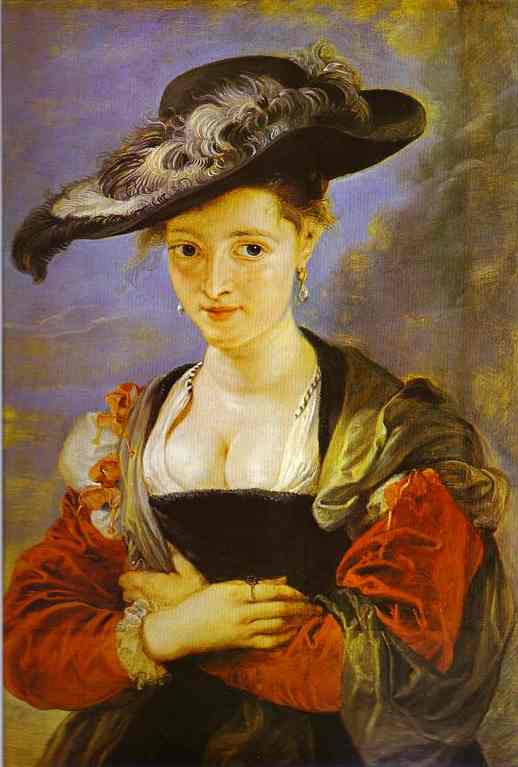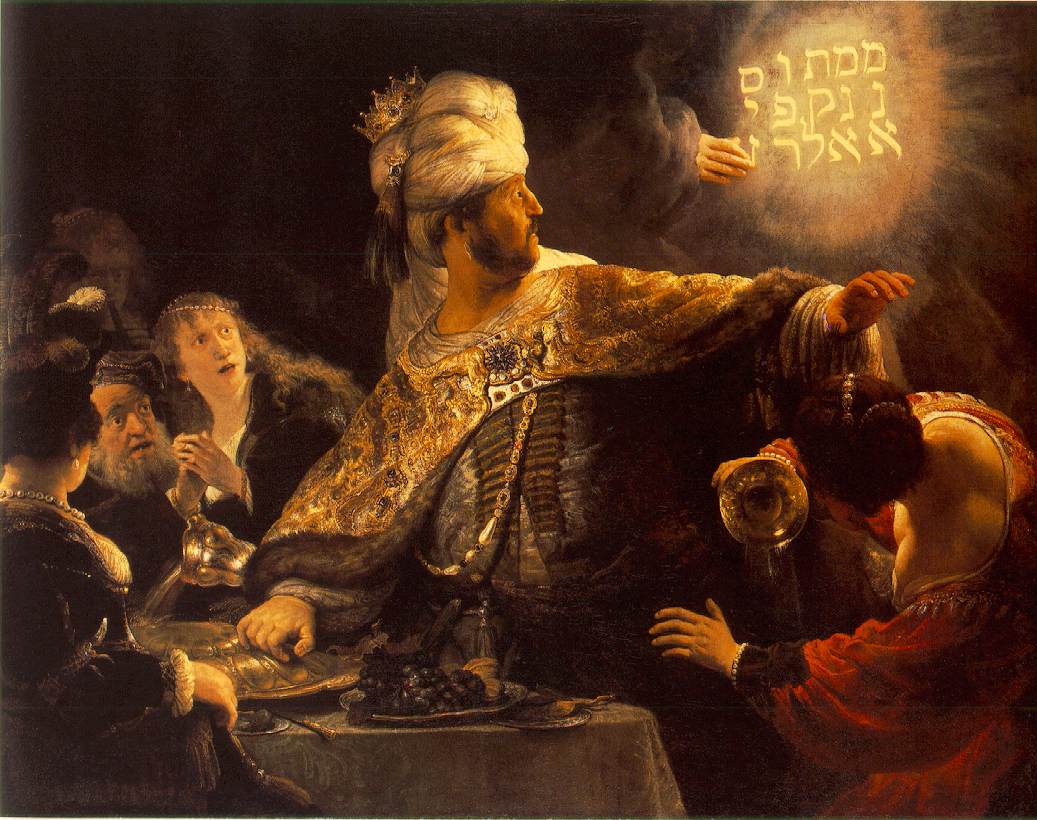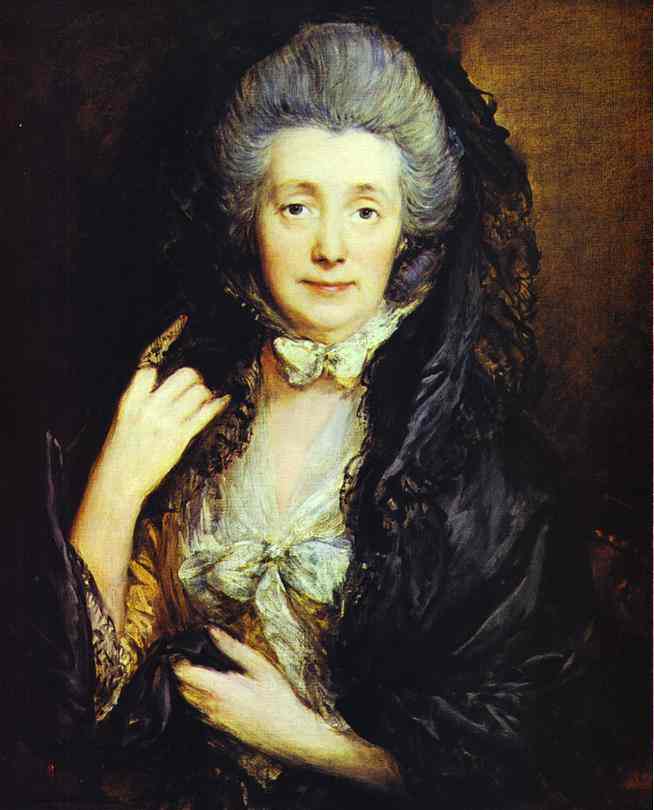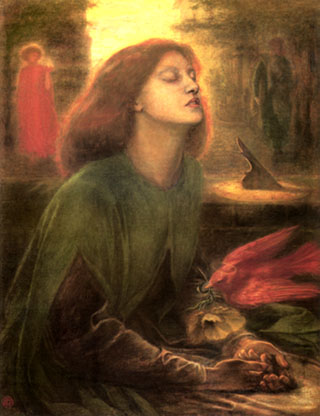Materials and Techniques (Easel Painting 2) 19-01-2004
Easel Painting 2 – 19-01-2004 Easel Painting II 1. Pigments i) new discoveries: Chemistry – prussian blue, ultramarine, chrome yellow ii) new discoveries: the Empire – gamboge and indian yellow 2. The Artist’s Colourman i) George Field and the madder plant ii) Winsor and Newton 3. Innovations in Equipment i) containers, canvas and brushes 4. Media i) Oil * the materials * the seventeenth century: Rubens and Rembrandt * the eighteenth century: Reynolds and Gainsborough * the nineteenth century: Turner and Constable * the academy and the Impressionists * the twentieth century: Matisse, Dali and Pollock ii) Watercolour iv) Gouache v) Pastels vii) Acrylic viii) Tempera Useful Reading: * W. Januszczak, Techniques of the World’s Great Painters (Oxford, 1981) * A. Callen, Techniques of the Impressionists (London, 1982) * C. Hayes, The Complete Guide to Painting and Drawing Techniques and Materials (Oxford, 1978) *W. Constable, The Painter’s Workshop (New York, 1979)
Slides:
Slide 1: Diagram of colour ranges (search Google for image)
Slide 2: John Constable, ‘Flatford Mill’, 1817, oil on canvas
John Constable (1776-1837)
Slide 3: J.M.W. Turner, ‘An Artist Colourman’s Workshop’, c.1807, oil on pine
Joseph Mallord William Turner (1775-1851)
Slide 4: The madder plant from George Field’s notebook, 1804 (search Google for image)
Slide 5: The lake laboratory from George Field’s notebook, 1809 (search Google for image)
Slide 6: Oil paint stored in pig bladders, glass syringes and collapsible tubes
Slide 7: Peter Paul Rubens, ‘Susanna Lunden’, c.1620-5, oil on oak
Slide 8: Rembrandt van Rijn, ‘The Feast of Belshazzar’ c.1635, oil on canvas
Slide 10: Thomas Gainsborough, ‘Portrait of Margaret Gainsborough’, c.1778, oil on canvas
Slide 11: John Constable, ‘Chain Pier, Brighton’, 1827, oil on canvas
John Constable (1776-1837)
Slide 12: William Turner, ‘Snowstorm’, 1842, oil on canvas
Joseph Mallord William Turner (1775-1851)
English Romantic
Slide 15: John Singer Sargent, ‘Claude Monet Painting at the Edge of a Wood’, 1888, oil on canvas
1887 Tate Gallery
Admired Monet
John Singer Sargent (1856-1925)
ex- pat American, technically precocious, studied with Carolus-Duran, lived in Lodon, went to Paris, bad reception, mixed with Impressionists, Degas dismissed him, close relationship with Monet, famous portrait painter
Slide 16: Claude Monet, ‘Bathing at La Grenouill're’, 1869, oil on canvas
Claude Monet (1840-1926)
Slide 17: Paul Cezanne, ‘The Castle of M'dan’, 1880, oil on canvas
Paul Cezanne (1839-1906)
Slide 18: George Seurat, ‘Bathers, Asni'res’, 1883-4, oil on canvas
Georges Seurat (1859-1891)
Slide 19: George Seurat’ An Afternoon at La Grande Jatte’, 1884-6, oil on canvas
Georges Seurat (1859-1891)
Slide 20: Henri Matisse, ‘Portrait of Andr' Derain’, 1905, oil on canvas
Henri Matisse (1869-1954)
Slide 21: Salvador Dali, ‘The Persistence of Memory’, 1931, oil on canvas
Salvador Dali (1904-1989)
The Persistence of Memory is aptly named, for the scene is indelibly memorable. Hard objects become inexplicably limp in this bleak and infinite dreamscape, while metal attracts ants like rotting flesh. Mastering what he called the usual paralyzing tricks of eye-fooling, Dali painted with what he called the most imperialist fury of precision, but only, he said, to systematize confusion and thus to help discredit completely the world of reality. It is the classical Surrealist ambition, yet some literal reality is included too: the distant golden cliffs are the coast of Catalonia, Dali ‘s home.
Those limp watches are as soft as overripe cheese — indeed the camembert of time, in Dali ‘s phrase. Here time must lose all meaning. Permanence goes with it: ants, a common theme in Dali ‘s work, represent decay, particularly when they attack a gold watch, and become grotesquely organic. The monstrous fleshy creature draped across the painting ‘s center is at once alien and familiar: an approximation of Dali ‘s own face in profile, its long eyelashes seem disturbingly insectlike or even sexual, as does what may or may not be a tongue oozing from its nose like a fat snail.
The year before this picture was painted, Dali formulated his paranoiac-critical method, cultivating self – induced psychotic hallucinations in order to create art. The difference between a madman and me, he said, is that I am not mad.
Slide 22: Jackson Pollock, ‘Autumn Rhythm’, 1950, oil and enamel on canvas
Jackson Pollock (1912-1956)
Autumn Rhythm: Number 30, 1950
1950
Oil on canvas
8 ft 9 in x 17 ft 3 in (266. 7 x 525. 8 cm)
The Metropolitan Museum of Art, New York
Slide 23: Francis Cotes, ‘Paul Sandby’, 1761, oil on canvas
Francis Cotes (1726-1770)
This portrait exemplifies the more romantic image of the artist that emerged in the later eighteenth century. In tune with the new ideas of’sensibility’' which stressed an emotional sensitivity to nature — the landscape painter Paul Sandby is shown in a relaxed attitude, sketching a view beyond the open window.
Sandby ‘s enraptured gaze and the fact that he is looking out of the window emphasises his emotional involvement with the scene he is drawing. A more traditional portrait would show the painter self – consciously presenting himself to the viewer.
(From the display caption November 2003)
Slide 24: John Sell Cotman, ‘Norwich Market Place’, 1806, watercolour on paper
John Sell Cotman (1782-1842)
English Romantic Painter
Slide 25: Thomas Girtin, ‘Bamburgh Castle’, c. 1797-9, watercolour on paper
Thomas Girtin (1775-1802)
English Romantic Painter
Girtin rejected the familiar view of Bamburgh in favour of a battered fragment of the outer wall. The low and close viewpoint and the vertical composition add drama, and help to exaggerate the height of the rock. This is also enhanced by the seagulls touched in with bodycolour to the left. These features, combined with the dark sky, encourage the viewer to imagine the violent natural forces that have wrecked the walls.
Had Tom Girtin lived, I should have starved JMW Turner
Slide 26: Dante Gabriel Rosetti, ‘Monna Pomona’, 1864, watercolour and gouache on paper
Dante Gabriel Rossetti (1828-1882)
Slide 27: Rosalba Carriera, ‘Allegory of Painting’, c.1730, pastel on paper
Rosalba Carriera (1675-1757)
Slide 29: David Hockney, ‘Mr and Mrs Clark and Percy’, 1970, acrylic on canvas
David Hockney (1937)
Slide 30: Maxwell Armfield, ‘This England — Portrait of an Owner’, 1943, tempera on paper
Maxwell Armfield (1881-1972)
Armfield described this picture as a satirical view of industrial society, which he loathed, and saw personified in the figure of the small industrialist. Armfield was on the side of’Beauty preserved ‘; he had previously painted landscapes and buildings owned by the National Trust under this title.
This emblematic portrait of the despoiling enemy is based on an earlier drawing of his father, an engineer who had a factory at Ringwood, Hampshire, where Armfield was born. It also reflects his esoteric theory of colour in which the interplay of magenta and green had ‘zodiacal’ significance.
(From the display caption Tate, May 2003)
[ text:
Pigment particles in a fluid medium that acts as both carrier and binder.
A lot of new colours were added in the 19. Some colours were discovered accidentally, e.g. Diesbach in Berlin discovered Prussian Blue — cheap but not light fast.
Constable used Prussian Blue with Yellow ochre to create his greens in Flatford mill.
In 1806 two French chemists found a blue from the slag furnaces was similar to ultramarine. In 1824 a prize of — 6,000 was offered and won by Guimet in 1828 for making ultramarines, it then caught on very quickly across Europe and the US.
Chemists and geologists were analysing new minerals, e.g. discovery of chrome and chrome yellow, lemon yellow. Did not take off until deposits were found in the US.
Gamboge – a resin from a tree in Indian, Thailand, Sri Lanka. The East Indian company started to import it.
Indian yellow – an organic pigment made from
the urine of cows fed on mango leaves. Stopped being made when the Indain Government decided it involved cruelty to cows.
In the Middle Ages and Renaissance the artist ‘s studio would prepare paints but by 17 the colourman came into being partly to satisfy demand from the amateurs. Professional artists were not keen on colourmen when they started and did not trust them. By the 19 most artists depended on colourmen.
Turner pointed the Colourman’s Workshop, note the horse grinding pigment.
George Field was the most important colourman of the 19 – he specialised in madder (from a plant that grew in Europe and the Middle East). Madder is not soluble in water so he developed n process for extracting the pigment by forcing water through on bag.
The most famous were Windsor and Newton who worked closely with George Field. Founded in 1830 ‘s and quickly became successful and famous. Appointed to Queen Victoria in 1841.
Originally paint was kept in bladdres. The artist would pierce the bladder. Problems included bursting and the paint going hard after it had been pierced.
James Harris designed a syringe container but they were very expensive.
In 1841 they discovered collapsible metal tubes in tin. Invented by John Rand but Windsor picked up the idea both for oils and water colours. Particularly useful for amateurs who did not paint often and were perfect for painting outdoors.
From 17 ready prepared canvases and ready stretched canvases by the 19. In the 19 machine manufactured canvas and brushes and even marl sticks were produced.
Oil Painting
Usually linseed oil but also walnut as it is less yellow. Poppy oil starts to be used in 17 by Dutch painters and it became one of the most important binders in 19 France. Poppy oil is much more buttery so it retains the brush marks and is slow to dry — it was used by the Impressionists.
Monet & Degas wanted a chalky finish so they put paint on blotting paper to soak up the oil and make the paint thicker.
Beef and mutton tallow were used to thicken paint in 19 but it doesn ‘t dry so the paint cracks. Wax was also used but if too much is used it thickens and goes black.
” Fat over lean ” is the principal of oil painting, i.e. the lower layers must have less oil so they dry more quickly.
The procedure starts with stretching the canvas and then covering it with glue size, this stops the paint sinking in, provides a smoother surface and stop oxides in the paint from damaging the canvas, it also stops the canvas threads moving and so stabilises the surface.
Then two or three ground coats were put on although the Impressionists only used one ground coat so the rough canvas would show through.
Rubens Susanna Lunden oil on oak boards, chalk mixed with glue helped give a luminous quality, then put brown priming on in rough broad strokes to give a varied effect. He then sketched on the ground. In some places the ground comes through. In this painting can see scumbling i.e. dragging the paint over a lower layer quite roughly, e.g. in the clouds. Very fluid paint work. He was one of the first artists to use turpentine – he kept a pot by him when painting to thin the paint.
Rembrandt – first sized the canvas, medium brown ground, he worked from the background to the foreground. Rembrandt is crucial as you can see the brushwork, and his use of impasto very thick point. Rembrandt always caked the canvas and put highlights on the ridged paint to improve the highlights.
Reynolds — was experimental – used melted wax but it can go wrong. Bad cracking can be seen in the NG. He also mixed incompatible pigments, see the portrait of Mrs Albemarle in the NG. She has a deathly white face as he use carmaline (?) to make the cheeks pink but the paint dropped off. He also used bitumen for a warm brown but it is tarry and never dries completely. Reynolds would use a light ground, paint a patch of white where the head would be, assistants would then paint the background and drapery.
Gainsborough was much more skilful in his technique, he used a pale ground and built the picture in layers. The top surface layer is always loose and he uses a lot of scumbling and impasto. Fluid paint in some parts. He also sometimes doesn ‘t mix on palette but puts contrasting colours on the canvas and they mix in the eye.
Constable did pencil under drawings and worked on the whole canvas at once. Detail of the sky shows scumbling also ground is pinkish and shows through in the sky. Also used thick white impasto on water (criticized as ” soap suds and white wash “). Also use of glazes – a thin layer of paint. Lots of brown and red glazes – creates depth and luminosity.
Turner is a great user of impasto using on palette knife at times. Also used thinner paint with a soft brush, see mast in painting,
Academic training supports line over colour, for example the first few years are all drawing and the colours, when used are muted. The debate between the Rubenists and Poissinists was won by the Poissinists. No visible brushwork to hide the craft of the painter. The avant guard moved away from this academic tradition and took the sketch as the finished product. Their work was spontaneous.
Many impressionists paint landscape (a lower genre), reject drawing as the basis for painting, create depth by brushstrokes, rely on viewer ‘s eye to mix paints, reject the smooth surface.
Outdoor — plein air painting — cartoon showing the practical problems of midges and wind.
Monet introduced plain air by Boudoir, went with Renoirs, e.g. to Grenouilles. Light ground translucent – little sense of drawing, colours juxtaposed rather than blended. Wanted to create what they saw rather than what they knew to be there. They were particularly interested in reflected colour, e.g. water and snow. Note the different brushstrokes long for boats and short for water.
Cezanne develops the directional brushstroke. Emphasises the surface of the canvas rather than what is being depicted.
Seurat uses a light ground different techniques – thick in the foreground and then thinned paint in the background to create a sense of distance. Note the darkening of skin and lightening of the water. He used dabs of paint to create a luminous effect — related to Ogden Rood ‘s book Modern Chromatics (1879). Rays of pure colour enter the eye of the viewer. They never quite blend and so give a shimmering effect.
Matisse ‘s ” Andre Derain “, an interest in colour in its own right, light ground, shape of head painted in cobalt blue. A la prima (wet on wet, wet on dry — scumbling) but a la prima is all painted in one go and so is wet on wet. Some heavy paint, some light.
Dali. Obliterates all brushstrokes, thin paint and use of marl stick.
Pollock dry painting, use of brushes, sticks, and trowels but ground is still used conventionally and note that the paint is contained to the centre.
Watercolour
Water and gum – transparency, lightest tones are paper – water colourist always builds up to darker. Important technique is wash. Problems – keeping paper moist – mixed honey with colour. Windsor and Newton sold glycerine for the same purpose. Pans of colour as well as tubes. It can freeze outside – Paul Sandby would mix in gin to stop paint freezing.
Watercolour is regarded as modern but, in fact, goes back to Durer but its use grew in the 17 and the most important forst artists to use watercolour was Paul Sandby. Usually seen as inferior to oil but in the 19 with Turner itbecomes much more respectable.
John Sell Cotman, flat washes and amazing levels of detail. Thomas Girtin would colour his paintings in front of the subject. Note the different effects used for the seagulls compared to the castle.
Gouache
Gouache is much more opaque than watercolour. It is less finely ground and white (zinc oxide) is mixed in, this means light can be painted over dark. Its use can be traced back to the Middle Ages.
Monna Pomona is watercolour and gouache.
Pastels
It is possible to paint with pastels. Pastels are made by mixing pigments with reson and moulding them into sticks. They can be moistened and used as paint but the surface must be fixed to avoid smudging. In the 18 milk was sometimes used. Starting in 18 France it became a craze and at one stage there were 2,500 pastellists in Paris alone. Carriera has a soft quality. The most innovative was Degas.
Degas would build the image in charcoal and then fill the image with pastels, making lines out of colour; some lines followed the form others did not. He built the entire image at once, note the use of the yellow in different parts of the picture would have been applied at the same time. Degas managed to build an impasto surface using pastel and fixer layers and he would spary hot water on the picture so he could move the pastel around.
Acrylic.
The pigment is mixed with a polymerised resin binder. A sizing and ground are not needed. Diego Rivera started the use of acrylics in order to paint murals outside as oil paint was not stable and fresco techniques were too difficult. Acrylics came onto the market in the 1950 ‘s in the US. Hockney Mr and Mrs Clark is acrylic and painted on a cotton surface. Smooth quality of acrylic he enhanced by spreading, notice the surface of the cat. It is fast drying, which is a problem, so Hockney sprayed the surface with water. The picture was typically finished with a layer of acrylic medium.
Tempera
Is still used by a few artists.
